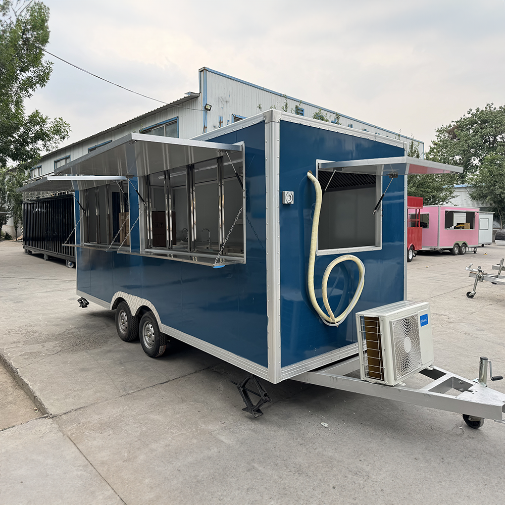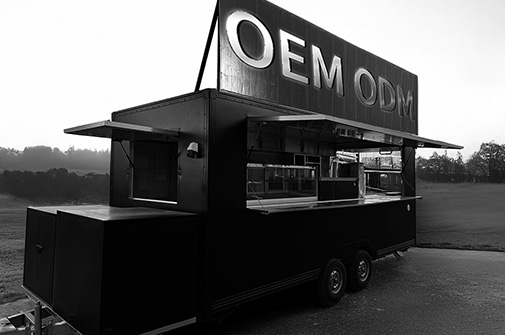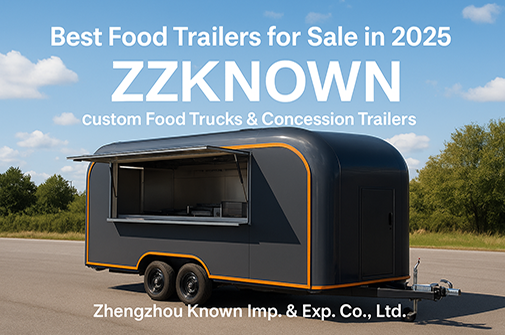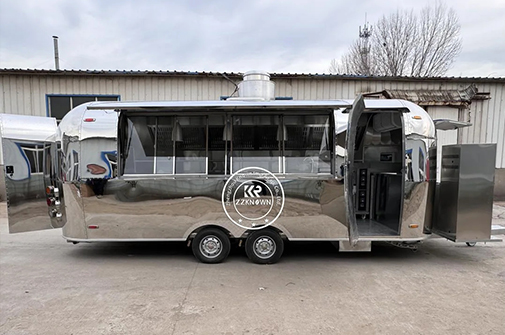Why it matters: Accurate tracking prevents stockouts, minimizes waste, and ensures you’re never overpaying for unused ingredients.
Digital POS Systems (e.g., Square, Toast): Automatically track sales and deduct inventory.
Spreadsheet Templates: Free Google Sheets or Excel templates for manual tracking.
Inventory Apps (e.g., Upserve, SimpleOrder): Sync with suppliers for real-time updates.
Example:
If you sell 50 burgers daily, your POS system should flag when buns or patties dip below a 3-day supply.
Classify items based on usage speed and perishability:
| Category | Examples | Management Tips |
|---|---|---|
| High-Priority | Buns, meat, cheese | Check daily; keep 3–5 days' stock. |
| Medium-Priority | Condiments, napkins, cups | Replenish weekly; bulk-buy non-perishables. |
| Low-Priority | Specialty sauces, seasonal items | Order as needed; avoid overstocking. |
Food trailers have limited room—maximize it:
Use Stackable Containers: Transparent bins for dry goods (flour, sugar).
Vertical Shelving: Install wall-mounted racks for spices or utensils.
Under-Counter Fridges: Store perishables like dairy or prepped veggies.
Pro Tip:
Label shelves with color-coded stickers (e.g., red for "urgent restock," green for "sufficient").
Demand fluctuates depending on where you park:
Events/Festivals: Stock 2–3x your usual inventory (e.g., extra bottled drinks).
Weekday Lunch Spots: Focus on quick-serve items (wraps, fries).
Residential Areas: Family-friendly portions and kid’s menu items.
Example:
If parking near a gym, prioritize protein shakes and healthy snacks; near a movie theater, load up on popcorn and sweets.
FIFO (First In, First Out): Arrange newer stock behind older items to use ingredients before they expire.
Pre-Portion Ingredients: Measure condiments, toppings, or coffee grounds into single-serving containers.
Case Study:
A taco truck reduced avocado waste by 40% by pre-scooping 2-oz portions and storing them in airtight containers.
Local Suppliers: Partner with farms or bakeries for fresh, just-in-time deliveries.
Backup Suppliers: Have alternatives for emergencies (e.g., a storm delays your usual produce truck).
Pro Tip:
Negotiate discounts for bulk purchases of non-perishables like disposable cutlery or napkins.
Check Stock Levels: Compare physical counts to digital records.
Identify Trends: Adjust orders based on slow-moving items (e.g., phase out unpopular menu items).
Audit Template:
| Item | Starting Stock | Used | Remaining | Waste |
|---|---|---|---|---|
| Ground Coffee | 10 lbs | 8 lbs | 2 lbs | 0 lbs |
| Chicken Patties | 100 units | 90 units | 10 units | 0 units |
Smart Thermometers: Monitor fridge/freezer temps remotely to prevent spoilage.
Reordering Alerts: Set up notifications in your POS system when stock hits a threshold.
Tool Example:
ChefMod sends automatic restock alerts to your phone based on real-time usage data.
Emergency Kit: Keep backup propane, a portable generator, and non-perishable snacks.
Mini Storage Unit: Store excess paper goods or seasonal decor offsite.
Assign Roles: Designate one person to manage inventory daily.
Track Waste: Have staff log spoiled items (e.g., burnt fries, expired milk) to identify issues.
Go Paperless: Use apps like Inventoryy to scan barcodes and update stock on the go.
Analyze Sales Data: Adjust menus seasonally (e.g., hot cocoa in winter, smoothies in summer).
Stay Mobile-Ready: Secure items with bungee cords or latches to prevent spills while driving.
By combining smart tools, space-saving hacks, and data-driven decisions, you’ll keep your food trailer stocked, efficient, and profitable—no matter where the road takes you!
Example Workflow:
Morning: Check inventory app for low-stock alerts → Place supplier order.
Lunch Rush: Use pre-portioned ingredients to speed up service.
Close: Log waste in spreadsheet → Adjust tomorrow’s prep list.
Tools Mentioned: Square POS, Upserve, ChefMod, Google Sheets.




